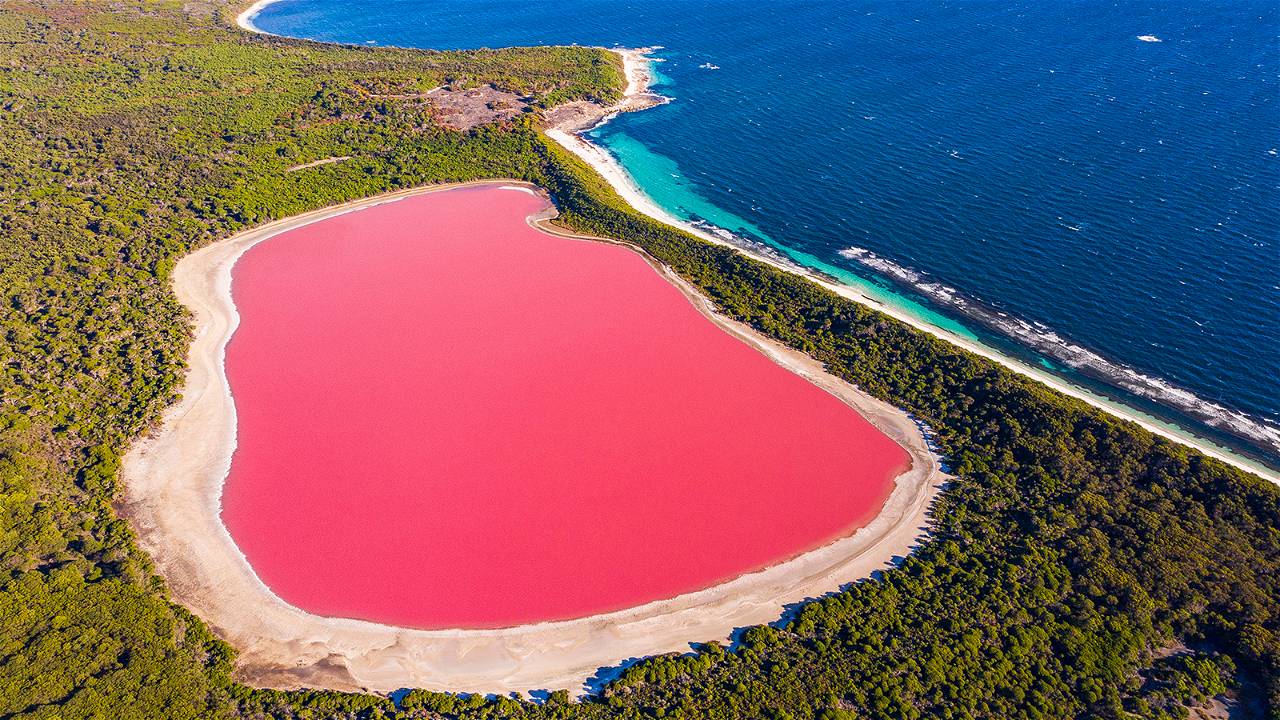
A bright pink lake on an island off the coast of Western Australia gets its colour from a mix of salt-loving bacteria and algae, according to DNA sequencing. The unusual bubblegum pink colour of a remote lake in Western Australia has long been a mystery, but new research suggests it is caused by a mix of colourful bacteria and algae.
Lake Hillier is located on Middle Island, off the coast of Western Australia's southern coast. The lake is 600 metres long, 250 metres wide, and eight times saltier than the ocean. Lake Hillier piqued Scott Tighe's interest at the University of Vermont in Burlington after he saw it on television. "I thought, wow, that's incredible. "I need to get over there, grab some samples, and sequence the hell out of it," he says.
Tighe is a co-founder of the Extreme Microbiome Project (XMP), an international collaboration aimed at genetically profiling extreme environments all over the world in order to discover new and interesting microbes.
He collaborated with Ken McGrath of Microba, an Australian microbial genomics company, who visited Lake Hillier to collect water and sediment samples.
Tighe, McGrath, and their colleagues analyzed the samples using metagenomics, a technique that sequences all of the DNA in an environmental sample at once. The genomes of individual microbes are then extracted using powerful computers.
Their research revealed that Lake Hillier is home to nearly 500 extremophiles, or organisms that thrive in harsh environments, such as bacteria, archaea, algae, and viruses. The majority were halophiles, a type of extremophile that can tolerate high levels of salt.
Several of these halophiles were colourful microbes such as purple sulphur bacteria, red-orange bacteria called Salinibacter ruber, and red algae called Dunaliella salina. According to Tighe, the pink colour of the lake is explained by the combination of these microbes and possibly others.
According to Tighe, the reason these microbes are coloured is that the purple, red, and orange pigments they contain – known as carotenoids – provide some protection against extreme saltiness.
Some of the microbes discovered in Lake Hillier appear to be novel to science, but they must still be fully characterised, according to him.
Other extreme environments sampled by XMP scientists include the Darvaza gas crater in Turkmenistan, also known as the "Door to Hell," the Dry valleys of Antarctica, brine lakes 3.5 kilometers under the ocean off western Greenland, and Movile cave in Romania. Tighe says the team is now planning to sample the Danakil depression in Ethiopia, which contains toxic hot springs, as well as Lake Magic in Australia, which is "so acidic it's like battery acid.
(Source: New Scientist)
















